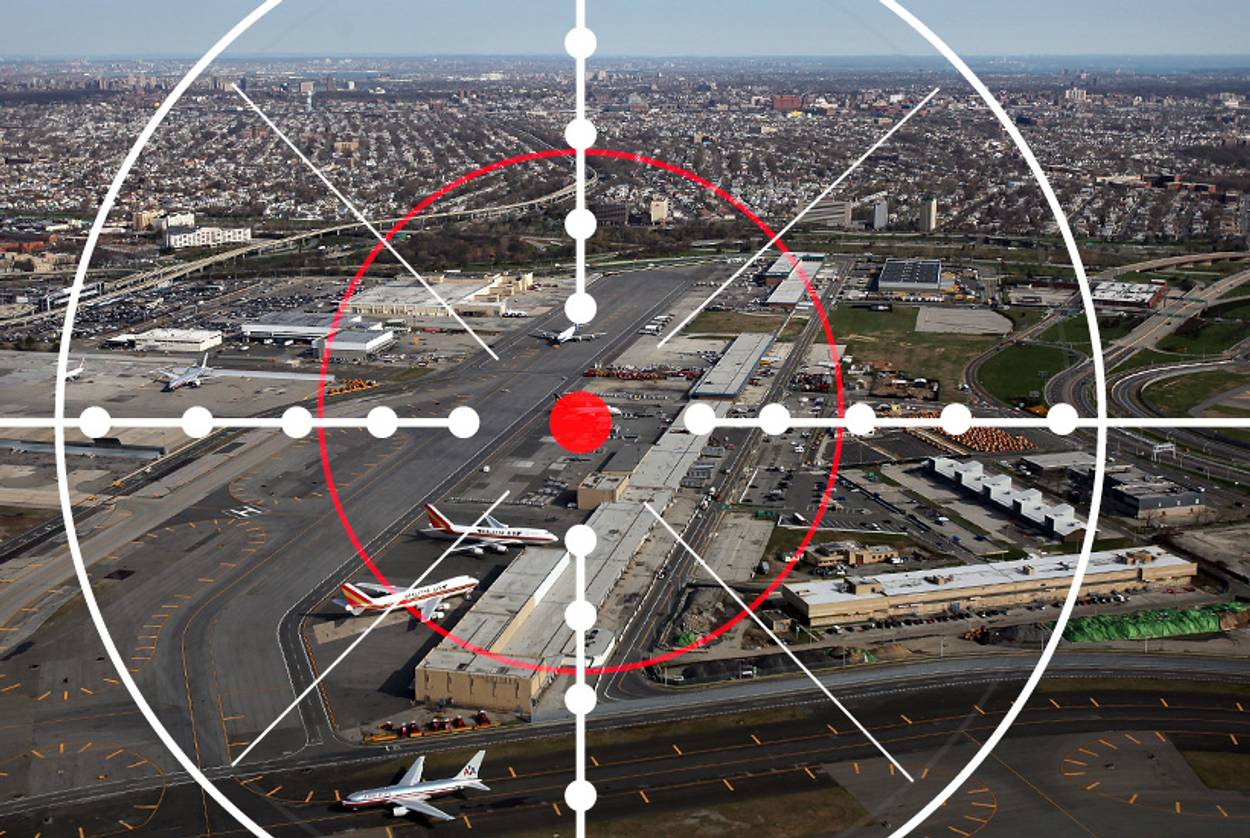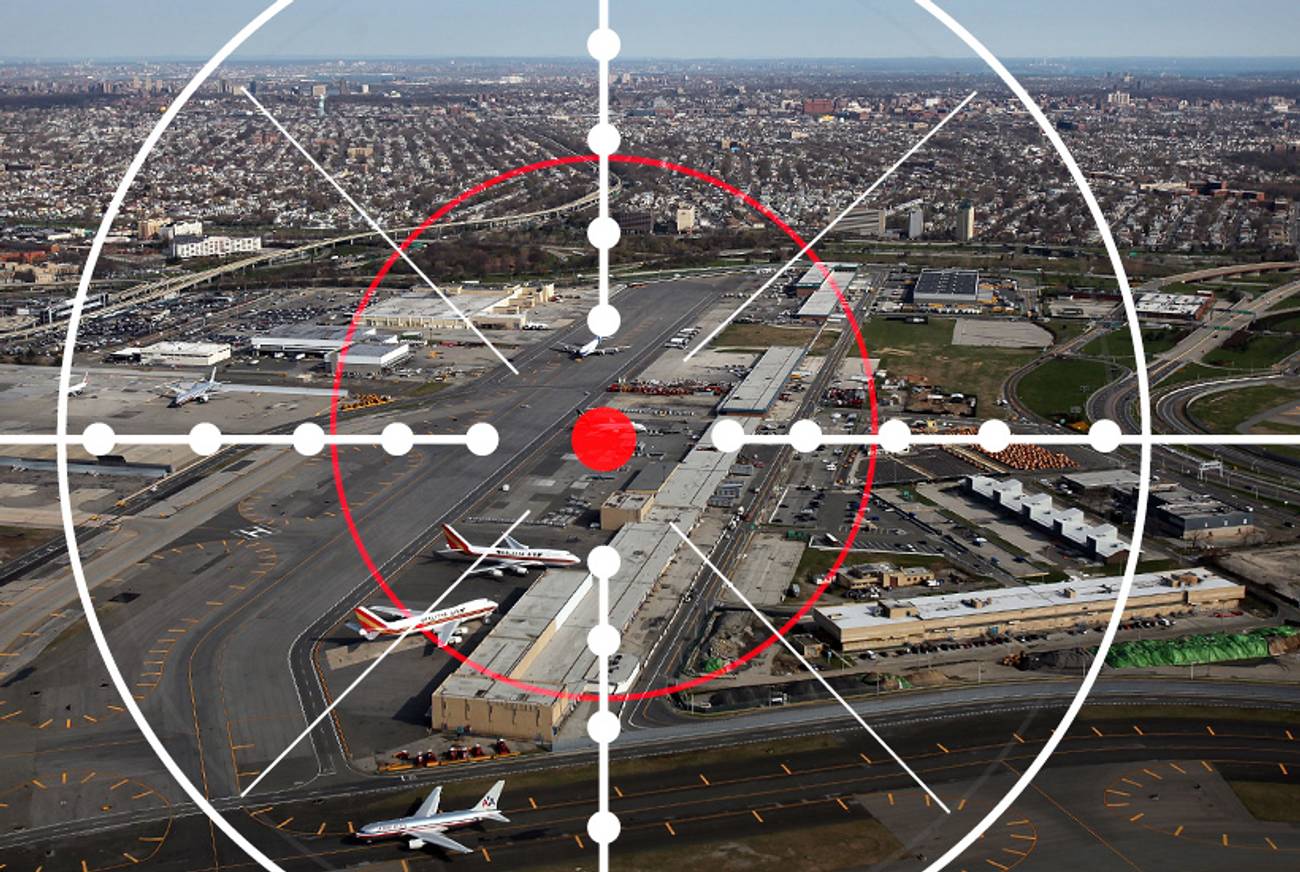How Iran Uses Terror Threats To Successfully Deter U.S. Military Action
Obama says his Syria move sent Tehran a message on nukes, but the mullahs have Washington cornered




President Barack Obama thinks that the deal with Russia over Syria’s chemical weapons was possible only because of his credible threat of force. The way he sees it, Iran’s gotten the message, too. As the president told George Stephanopoulos over the weekend, “My suspicion is that the Iranians recognize they shouldn’t draw a lesson that we haven’t struck [Syria], to think we won’t strike Iran.”
However, the essential feature of a credible threat of force is to have previously employed actual force against the adversary you’re threatening. Shortly before Obama announced he would seek congressional authorization for the use of military force against Syria, the White House briefed House and Senate staffers on the possible ramifications of U.S. action. Perhaps unintentionally, the briefings seemed only to have dampened congressional appetite for attacking Iran’s man in Damascus. “They showed them Iran retaliation scenarios,” a senior official at a Washington, D.C.-based pro-Israel organization told me. “They highlighted the fact that Hezbollah has a global reach. The staffers left those briefings with the blood drained from their faces.”
Iran and its allies have proven their willingness to use force against America—as witnessed by the April 1983 bombing of the American Embassy in Beirut; the October 1983 bombing of the Marine barracks in Beirut; the 1998 bombing of Khobar Towers, which housed U.S. servicemen in Saudi Arabia; and Iran’s war against American troops in Iraq, which lasted until Obama’s 2011 withdrawal.
And those are just the operations that the Iranians pulled off. Iran has also launched plenty of other operations against the United States and its allies that are no less menacing, even though they failed. In the last few years, Iran and Hezbollah have plotted attacks in, among other places, Thailand, India, Kenya, Turkey, Azerbaijan, and Georgia. A recent bombing in Bulgaria and a terror plot in Cyprus sent the clear message that Iran has also resumed operations in Europe after many years of avoiding violence on the continent.
It is easy to frame some of Iran’s recent terror plots as evidence that they are the gang who couldn’t shoot straight. For every operation that, say, kills five Israeli tourists in a Bulgarian resort town, there are a dozen botched plots, like the operation in Thailand where an Iranian agent blew off his own legs with a hand grenade.
But from another perspective, it doesn’t matter that the vast majority of Iranian projects come up empty, like the plan to assassinate the Saudi ambassador to the United States, which might also have killed hundreds of Americans in the nation’s capital if it had succeeded. Taken together, what these operations show is an obvious, and alarming, inclination to employ violence against America—even in the absence of any direct American military action against Iran. Carried out by second-string operatives, yet backed by arms of the Iranian government and the global terror infrastructure it has put in place, these attempts are generally interpreted by policymakers as warning shots—a reminder of what will happen if America really gets the Iranians mad.
One recent failed Iranian terror plot provides ample and scary evidence of just how far the Iranians are able and willing to go. In 2007, four men planned to blow up fuel tanks and the fuel pipeline under New York’s JFK airport—and sought financial and logistical help from Iran to carry out their plot. “They looked to anyone to help them pull it off,” says Matthew Levitt, a former Treasury Department official and a senior fellow at the Washington Institute for Near East Policy who was an expert witness for the prosecution in the trials of the four conspirators. One of them, a Guyanese national named Abdul Kadir, proposed the idea of blowing up JFK to his old friend, an Iranian diplomat he’d known since 1983. According to the Justice Department, Kadir reached out to Mohsen Rabbani, a leading Iranian diplomat whose unique take on foreign relations didn’t prevent him from running for president in Iran’s recent clerically supervised elections. As Levitt puts it, “Rabbani was the primary architect of the 1994 bombing of the Jewish community center in Buenos Aires.”
Alberto Nisman was special prosecutor for the July 18, 1994, car bombing that leveled the Asociación Mutual Israelita Argentina and killed 85 people. In June, he released a 500-page document detailing how Iran has established and maintained “local clandestine intelligence stations designed to sponsor, foster, and execute terrorist attacks” in the Western Hemisphere, especially in Latin America.
Rabbani, according to Nisman’s report, was the mastermind of the Buenos Aires atrocity. He arrived in Argentina in 1983 ostensibly to run a Buenos Aires mosque and serve as a representative of the Islamic Republic’s ministry of agriculture. In reality he was creating spy networks throughout the continent—Brazil, Paraguay, Uruguay, Chile, Colombia, Trinidad and Tobago, Suriname, and of course Guyana, the small island nation off the Venezuelan coast where Rabbani found an eager disciple in Abdul Kadir.
Kadir had established contact with the Islamic Republic by 1983, when he first traveled to Iran. Because the Islamic Republic did not have diplomatic representation in Guyana, Kadir, as he confessed in his 2010 trial, was handled by the Iranian ambassador to Venezuela. Nonetheless, evidence produced at Kadir’s trial shows he had stayed in touch with Rabbani over the years. As Nisman’s report argues, “there were common patterns between the activities performed by Kadir in Guyana and those developed by Rabbani in Argentina,” with “the same Iranian intelligence infiltration system … consisting of many stages, interactive and complex links.”
Among other parallels, in both cases Iran used its embassies as well as mosques and cultural centers, like the Islamic Information Center of Guyana that Kadir headed, to recruit and coordinate spy networks throughout Latin America, just like it’s done in Europe, Africa, Asia, and throughout the Middle East. The goal, explained the confidential informant who’d infiltrated the JFK cell, “was to form an organization like Hezbollah in the Caribbean.”
If the prospect seems absurd—mullahs and militants rubbing shoulders with bikini-clad tourists on sun-drenched beaches—it shouldn’t. The reality is the mullahs and militants are now running the beaches of Beirut, which used to be known as the Paris of the Middle East. As Levitt shows in his recently published book, Hezbollah: The Global Footprint of Lebanon’s Party of God, Iran’s long arm reaches virtually everywhere on the globe and therefore everywhere the United States has interests, including here at home.
Iran’s willingness to contemplate a mass casualty attack on one of America’s busiest airports is chilling—and it’s meant to be. A successful attack on planes, equipment, terminals, and passengers at JFK might well have done as much, or more, damage as 9/11, crippling air traffic and sapping confidence in law enforcement and policymakers. With U.S. troops in Iraq and Afghanistan at the time, millions of Americans would have been in an uproar, demanding a troop withdrawal in order to avoid further attacks—just as Spain did after the Madrid train bombings. In other words, American interests and U.S. policy would have been held hostage to the whims of the Islamic Republic and the ability of its agents to carry out operations on American soil that no other state in the world would dare contemplate.
“The JFK operation isn’t that well known,” explains Levitt, “because it’s a plot that didn’t happen.” Kadir was on his way to meet Rabbani and other officials when he was arrested boarding a plane in Trinidad en route to Iran via Venezuela. He and his three co-conspirators were all found guilty, with three of them, including Kadir, getting life sentences.
The other reason the JFK plot isn’t that well known is that U.S. officials are loath to discuss it, even as the prospect of such future attacks keeps them up at night. If the United States, or Israel, launches an attack on Iran’s nuclear facilities, Tehran will loosen the gates of hell and keep them open indefinitely. Which is why, contrary to Obama’s professions of concern for Israel’s security vis-a-vis Iran, what happens to Israel in the event of an American attack on Iran is hardly the main concern of American policymakers and planners. What the White House is actually worried about is that one of the many bungled plots against Americans where they live, work, and play might come to fruition.
Indeed, the most chilling aspect of both the JFK operation and the plot to kill the Saudi ambassador in Washington is that they were implemented by losers. The Iranians weren’t sending in the first team—like Hezbollah, the Quds Force, and ministry of intelligence—but wannabes eager to prove their value. Given the abundance of losers and lunatics in the United States alone, Iran has a lot of expendable assets they can tap. So what if they rarely pan out? The point’s been made—and American policymakers are scared. That’s real deterrence.
***
Like this article? Sign up for our Daily Digest to get Tablet Magazine’s new content in your inbox each morning.
Lee Smith is the author of The Consequences of Syria.
Lee Smith is the author of The Permanent Coup: How Enemies Foreign and Domestic Targeted the American President (2020).